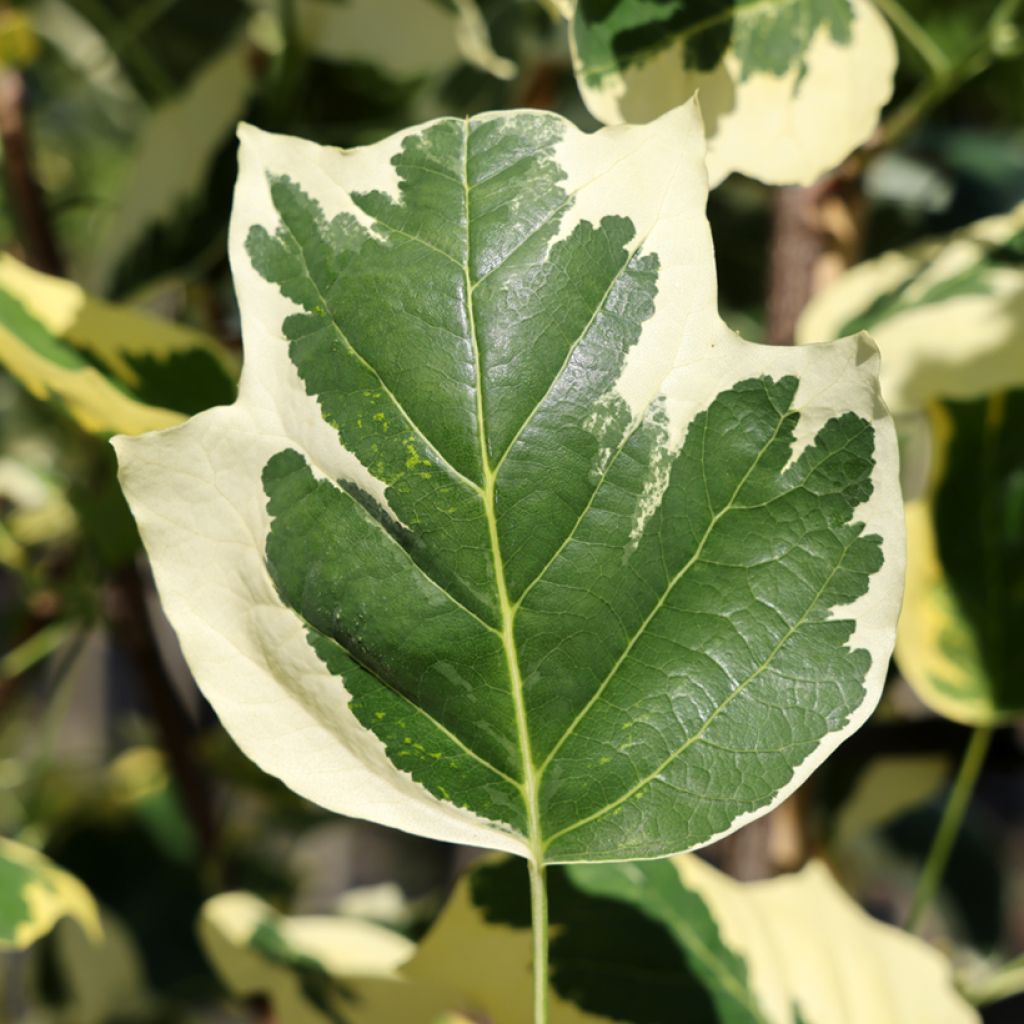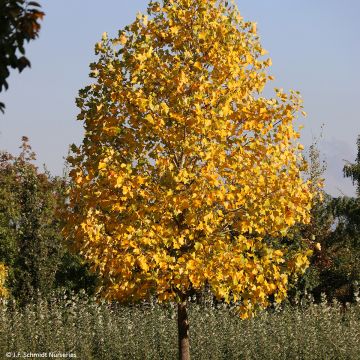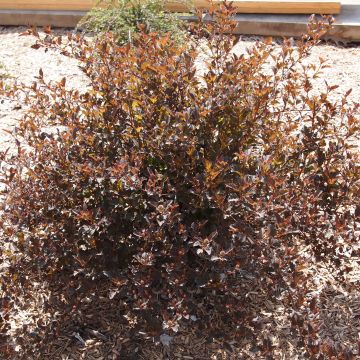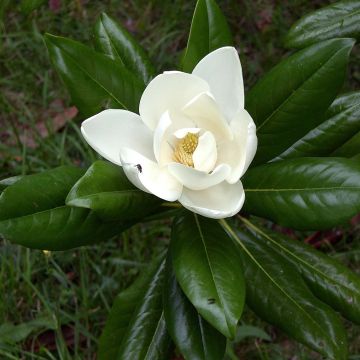

Liriodendron tulipifera Snow Bird


Liriodendron tulipifera Snow Bird
Liriodendron tulipifera Snow Bird
Liriodendron tulipifera Snowbird
Tulip tree, American tulip tree, Tulip poplar, Yellow poplar
Special offer!
Receive a €20 voucher for any order over €90 (excluding delivery costs, credit notes, and plastic-free options)!
1- Add your favorite plants to your cart.
2- Once you have reached €90, confirm your order (you can even choose the delivery date!).
3- As soon as your order is shipped, you will receive an email containing your voucher code, valid for 3 months (90 days).
Your voucher is unique and can only be used once, for any order with a minimum value of €20, excluding delivery costs.
Can be combined with other current offers, non-divisible and non-refundable.
Why not try an alternative variety in stock?
View all →This plant carries a 24 months recovery warranty
More information
We guarantee the quality of our plants for a full growing cycle, and will replace at our expense any plant that fails to recover under normal climatic and planting conditions.
Would this plant suit my garden?
Set up your Plantfit profile →
Description
Liriodendron tulipifera 'Snow Bird' is a variety of Tulip tree that combines beautiful variegated foliage with an elegant habit. With a narrower width, it is better suited for smaller gardens. This deciduous tree offers autumn colours in shades of gold and the same surprising summer flowering as the species. A mature specimen will produce tulip-shaped flowers in pale yellowish-green, with orange tones at the base, discreet but beautiful. Planted in deep, fertile, and moist soil, this Tulip tree will display all its natural elegance, particularly when planted as a specimen tree.
The Tulip tree, from the magnolia family, is native to the central-western United States, where it often grows near watercourses. This tree, which can live up to 300 years (in Europe), can reach a height of 40m at maturity in its native habitat. However, in our gardens, its adult size varies between 15 and 25m in height.
The 'Snowbird' variety is a horticultural selection attributed to James Palmer Rumbal, a long-time researcher at the New Zealand nursery Duncan & Davies. Its very upright branches are almost parallel to the trunk. The crown is very narrow during the tree's early years and then widens, although not as much as typically observed in this Tulip tree. Growing slightly slower than the species, this variety will reach an average height of 12m with a spread of 4m. Its straight trunk is covered with a thick, fissured greyish bark and topped with a columnar and closed crown. The young branches are greyish-orange, then become dark gray. Its leaves, measuring 10 to 15 cm, are deciduous and divided into 4 lobes separated by distinct notches, resembling a tulip shape. The leaf blade is dark green in the center, widely bordered with yellow turning creamy. The foliage turns yellow in autumn before falling. Flowering occurs from May to July. The flowers of this Liriodendron are solitary, with 9 tepals of a very pale greenish-yellow to white colour, tinged with orange at the base, arranged in a wide cup shape reminiscent of tulips. They measure approximately 6 cm long and 10 cm wide, and are slightly fragrant with a lemony scent. Inside the cup, a large creamy-white central cone is surrounded by a crown of erect stamens measuring 4 to 5 cm. Forming on mature individuals, the fruit of the tulip tree resembles that of the magnolia: it is ovoid, dark brown, 5 cm long, and persists throughout winter. It releases winged achenes measuring 3 to 5 cm. The root of this tree is a fleshy and taproot, anchoring deeply into the soil, which should be deep, loose, and well-drained.
The hardy 'Snow Bird' Tulip tree prefers sunny exposures. Less bulky than the species, it can be planted in medium to large gardens, as a specimen tree on a lawn or near a large pond. At its base, ground covers that thrive in shade or dappled light can be planted, such as Pachysandra terminalis or Asarum europaeum (European wild ginger). To enhance the brightness of the foliage of this tulip tree, shrubs with purple or dark red foliage can be planted nearby, such as Physocarpus opulifolius 'Diabolo' or Berberis thunbergii 'Atropurpurea'.
Report an error about the product description
Plant habit
Flowering
Foliage
Botanical data
Liriodendron
tulipifera
Snowbird
Magnoliaceae
Tulip tree, American tulip tree, Tulip poplar, Yellow poplar
Cultivar or hybrid
Other Liriodendron - Tulip tree
View all →Planting and care
The 'Snow Bird' Virginia Tulip Tree prefers deep, loose, well-drained, rich, and clayey soil and a sunny or semi-shady exposure. It requires consistently moist soil throughout the year and withstands our cold winters well. It adapts well to slightly acidic, neutral, or slightly alkaline soils. This tree does not appreciate major pruning or trimming.
Planting period
Intended location
Care
This item has not been reviewed yet - be the first to leave a review about it.
Similar products
Haven't found what you were looking for?
Hardiness is the lowest winter temperature a plant can endure without suffering serious damage or even dying. However, hardiness is affected by location (a sheltered area, such as a patio), protection (winter cover) and soil type (hardiness is improved by well-drained soil).

Photo Sharing Terms & Conditions
In order to encourage gardeners to interact and share their experiences, Promesse de fleurs offers various media enabling content to be uploaded onto its Site - in particular via the ‘Photo sharing’ module.
The User agrees to refrain from:
- Posting any content that is illegal, prejudicial, insulting, racist, inciteful to hatred, revisionist, contrary to public decency, that infringes on privacy or on the privacy rights of third parties, in particular the publicity rights of persons and goods, intellectual property rights, or the right to privacy.
- Submitting content on behalf of a third party;
- Impersonate the identity of a third party and/or publish any personal information about a third party;
In general, the User undertakes to refrain from any unethical behaviour.
All Content (in particular text, comments, files, images, photos, videos, creative works, etc.), which may be subject to property or intellectual property rights, image or other private rights, shall remain the property of the User, subject to the limited rights granted by the terms of the licence granted by Promesse de fleurs as stated below. Users are at liberty to publish or not to publish such Content on the Site, notably via the ‘Photo Sharing’ facility, and accept that this Content shall be made public and freely accessible, notably on the Internet.
Users further acknowledge, undertake to have ,and guarantee that they hold all necessary rights and permissions to publish such material on the Site, in particular with regard to the legislation in force pertaining to any privacy, property, intellectual property, image, or contractual rights, or rights of any other nature. By publishing such Content on the Site, Users acknowledge accepting full liability as publishers of the Content within the meaning of the law, and grant Promesse de fleurs, free of charge, an inclusive, worldwide licence for the said Content for the entire duration of its publication, including all reproduction, representation, up/downloading, displaying, performing, transmission, and storage rights.
Users also grant permission for their name to be linked to the Content and accept that this link may not always be made available.
By engaging in posting material, Users consent to their Content becoming automatically accessible on the Internet, in particular on other sites and/or blogs and/or web pages of the Promesse de fleurs site, including in particular social pages and the Promesse de fleurs catalogue.
Users may secure the removal of entrusted content free of charge by issuing a simple request via our contact form.
The flowering period indicated on our website applies to countries and regions located in USDA zone 8 (France, the United Kingdom, Ireland, the Netherlands, etc.)
It will vary according to where you live:
- In zones 9 to 10 (Italy, Spain, Greece, etc.), flowering will occur about 2 to 4 weeks earlier.
- In zones 6 to 7 (Germany, Poland, Slovenia, and lower mountainous regions), flowering will be delayed by 2 to 3 weeks.
- In zone 5 (Central Europe, Scandinavia), blooming will be delayed by 3 to 5 weeks.
In temperate climates, pruning of spring-flowering shrubs (forsythia, spireas, etc.) should be done just after flowering.
Pruning of summer-flowering shrubs (Indian Lilac, Perovskia, etc.) can be done in winter or spring.
In cold regions as well as with frost-sensitive plants, avoid pruning too early when severe frosts may still occur.
The planting period indicated on our website applies to countries and regions located in USDA zone 8 (France, United Kingdom, Ireland, Netherlands).
It will vary according to where you live:
- In Mediterranean zones (Marseille, Madrid, Milan, etc.), autumn and winter are the best planting periods.
- In continental zones (Strasbourg, Munich, Vienna, etc.), delay planting by 2 to 3 weeks in spring and bring it forward by 2 to 4 weeks in autumn.
- In mountainous regions (the Alps, Pyrenees, Carpathians, etc.), it is best to plant in late spring (May-June) or late summer (August-September).
The harvesting period indicated on our website applies to countries and regions in USDA zone 8 (France, England, Ireland, the Netherlands).
In colder areas (Scandinavia, Poland, Austria...) fruit and vegetable harvests are likely to be delayed by 3-4 weeks.
In warmer areas (Italy, Spain, Greece, etc.), harvesting will probably take place earlier, depending on weather conditions.
The sowing periods indicated on our website apply to countries and regions within USDA Zone 8 (France, UK, Ireland, Netherlands).
In colder areas (Scandinavia, Poland, Austria...), delay any outdoor sowing by 3-4 weeks, or sow under glass.
In warmer climes (Italy, Spain, Greece, etc.), bring outdoor sowing forward by a few weeks.













































